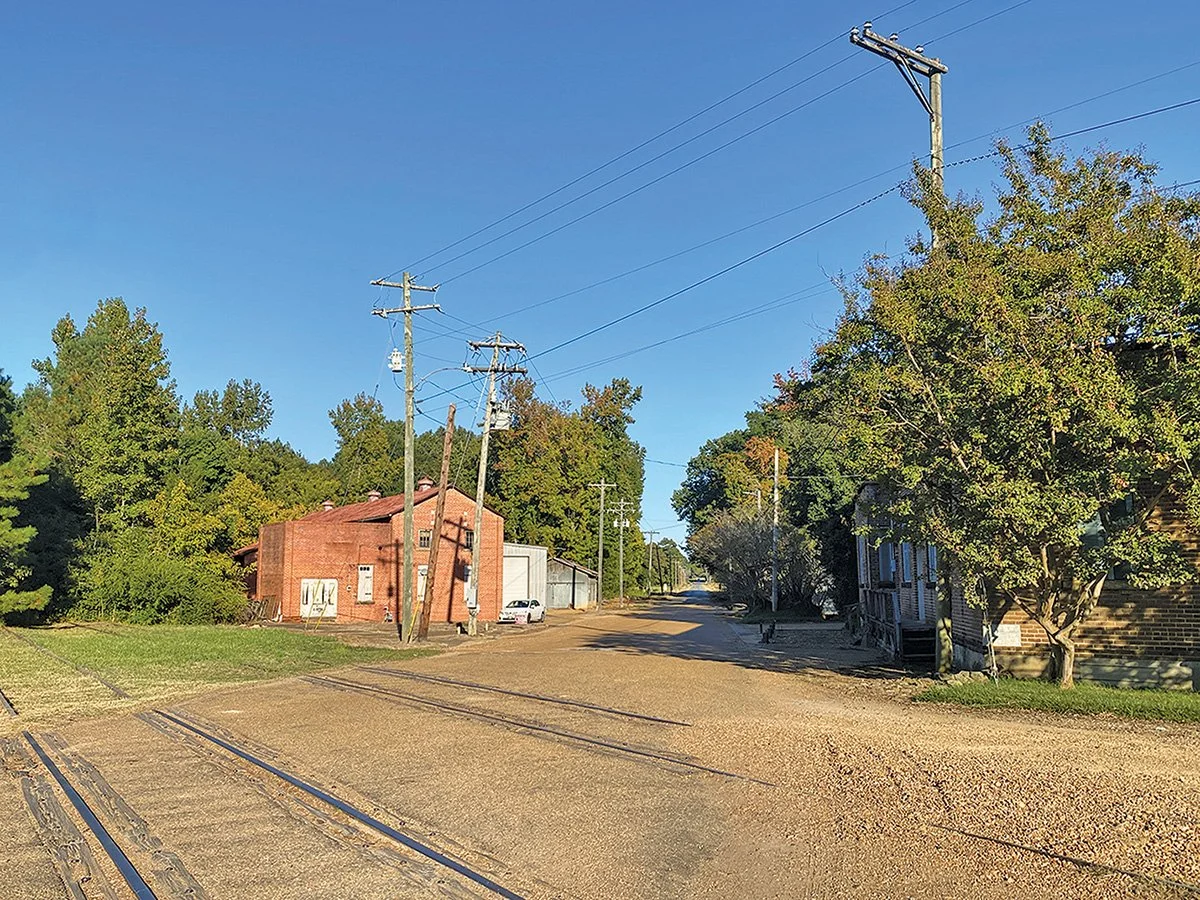Greenville to West Point bike trail project gaining steam
From West Point to Greenville, nearly 100 miles of the old Columbus and Greenville Railroad tracks sit dormant as nature retakes the land the tracks sit upon.
The tracks that once brought bustling trains chugging through towns are now unused and, in some places, dangerous, particularly at road crossings.
Wilson Carroll, an avid biker and lawyer, wants Greenville and West Point to serve as trailheads for a bike trail which would replace the tracks.
“Growing up in Greenwood, I knew the C&G had been abandoned, so in 2008 I formed the C&G Rail Trail Coalition to promote the idea of converting it to a rail trail,” Carroll said. “We got a lot of early support, but then the railroad was purchased by a company called Genesee and Wyoming. … They did not have any interest at that point in abandoning the line and converting it to a rail trail.”
G&W still owns the railway, with the piece between West Point and Columbus still in use. But after years of unfulfilled hope that the rest of the railroad would be active again, Carroll said the southern region vice president of G&W reached out to him in February 2022 saying the company was interested in letting the unused portion become a trail.
In order to obtain the 92 miles of railroad, Carroll said the first thing the coalition needs is an estimate on how much it would cost to take up the tracks and replace it with a 10- to 12-foot wide asphalt path. From there, Carroll intends to apply for federal funds from the U.S. Department of Transportation, which should support at least 80 percent, if not all, of the project.
The path across the state would go through the hearts of many towns including Greenwood, North Carrollton, Winona, Kilgore, Eupora, Mathiston, Maben, Pheba and West Point.
In January the Greenwood Convention and Visitors Bureau voted to spend $25,000 to hire a grant writer, which would help apply for federal funds to conduct an engineering and environmental analysis of the project. A marketing economist, Randall Gross from Nashville, Tennessee, has also been brought on to give insight to the project’s economic impact.
“We are cautiously optimistic that hopefully by late this summer or early fall we’ll be able to report we’ve gotten the funding we need,” Carroll said. “This is not a commitment to do the job, but it will enable the cities, counties and citizens along the line to get a better understanding of what’s involved, which has to be done on any project of this magnitude. You have to do a study first.”
Johnny Mack Morrow, project manager for research and economic development at the Mississippi State University Stennis Institute, says the trail will draw bikers from all over, and tourism in the towns and counties along the path will increase. He points to towns like Houston and New Albany that have benefited from the Tanglefoot Trail, the most recent rail-to-trail conversion in North Mississippi.
“Throughout my lifetime, I’ve noticed that tourism projects, when they come to rural areas tend to take a small town that’s maybe not doing much economically and turn it into a boomtown,” Morrow said. “… As an economist, I learned when those new dollars come to an area, they have a multiplier effect, and experts say they increase spending six times before they actually leave the city in which it was originally spent.”
In efforts to reach the communities that will be affected by the rail trail, Carroll and other members of the coalition have visited various communities to hear citizens’ input.
“We plan to be a good neighbor,” Carroll said. “… Some people have expressed concerns, fears about having people coming across their land, their backyards, but all of these folks live in the vicinity of public roads, highways, gravel roads. People are always traveling on these roads, and bad things aren’t happening. The kind of people who frequent bike trails are good people – it’s not a criminal element. That’s why you don’t have horror stories from the Tanglefoot Trail or the Longleaf Trace (from Hattiesburg to Prentiss).”
Once the trail is complete, maintenance will be handed over to the local governments, and Carroll said every stop will have funding provided to create “whistlestops,” which will include tourism pamphlets like what to do, where to stay and more.
The eventual goal is to create a network of trails across north Mississippi. The proposed project would be the only bike trail in the state that crosses through the Natchez Trace, and eventually Carroll would like to have a connecting trail from the Tanglefoot to the Trace.
“Once we get the (grant filled out), we will be able to really come up with a set of milestones,” Carroll said. “That should happen, we think, within the next six to eight months. In the meantime, we’re continuing to talk with the railroad on a monthly basis, and they are very supportive, very accommodating working with us to provide us with information we need. We’re doing everything we can to keep the ball moving forward.”
STORY BY JESSICA LINDSEY
PHOTO BY JESSICA LINDSEY
MAP COURTESY OF GENESEE AND WYOMING RAILROAD

